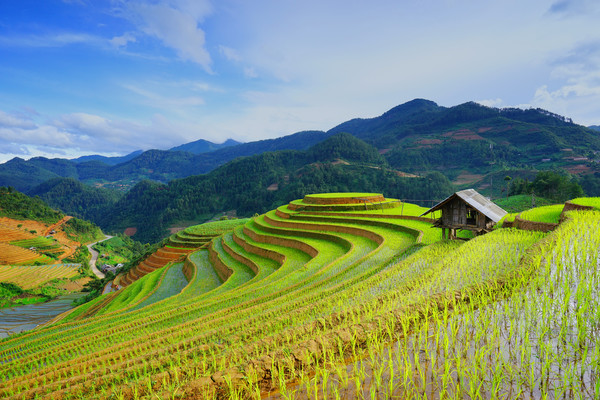
Vietnam: Italian exports growing
In 2018, the export of Italian technologies for agriculture reached the record of 5.5 million euros. Despite last year’s boom, our country holds a marginal share, just 2% of Vietnamese imports of agricultural machinery. Traditional methods of cultivation still prevail in Vietnam, but the government is pushing for mechanization
New historical peak for agricultural machinery exports to Vietnam. Made in Italy products, which saw double-digit year-on-year growth rates between 2013 and 2018, recorded another record in 2018, with a value of € 5.5 million. This was announced by a report by the ICE Agency, Ho Chi Minh City office, dated July 2019. In short, as can be seen from the ICE report, for the Italian agricultural machinery sector this is a real boom, all the more significant if we consider that just six years ago the total value of our exports was less then 600 thousand euros. The drivers are mainly machines used for soil preparation, cultivators, used tractors and the spare parts sector. Motors and breeding technologies also put in a respectable performance. For Italian brands this is veritable achievement, result of a strategy devoted to the enhancement of our industry in the South East Asian country. “In Vietnam - reads the note prepared by the ICE Agency - the Italian government organized many promotional activities that enabled our manufacturers to discover new business opportunities and thus create fruitful commercial collaborations”. In this regard, among the various official initiatives, we should mention the mission promoted by FederUnacoma, which in June 2017 brought a delegation of eight manufacturers to Hanoi in a four-day meeting on the opportunities offered by Vietnamese agriculture. On the other hand, according to the ICE Agency, the agro-mechanical sector in Vietnam has important growth margins, linked to strong (latent and non-latent) demand for agricultural technologies and the development of new crops.
The technological gap of Vietnam
Compared to the snapshot taken two years ago by the Mondo Macchina focus (number 10/2017), the geography of the sector has remained essentially unchanged. The focus revealed the image of a country with a strong dependence on rice (90% of the total grain production) and in which, in the face of an extreme fragmentation of the cultivated areas (in the Mekong region, the agricultural heart of Vietnam, 85% of farms do not reach half a hectare), the fleet was completely inadequate for the needs of modern and efficient agriculture. On the Mekong rice fields, for example, today there are just over 42 thousand threshing machines, around 2,800 harvesters and 600 combine harvesters, but the bulk of the operations are still done by hand. This inevitably ends up causing significant product losses, a significant increase in working times and a dysfunctional use of production factors. Therefore, the cost of cultivation compared to the final price of the product appears to be unbalanced, where the use of a single combine - according to the ICE note - could cut production costs by 30%. Hanoi’s technological deficit is also evident in the tractor segment. The sector has 480,000 machines, for a total power of 5.6 million horsepower, but it is mostly multi-purpose off-road vehicles with an average power per unit that hardly reaches 15 horsepower, for a mechanization rate equal to just 1.6 horsepower per hectare. To bridge this gap, the Vietnamese government has followed two different strategic directions. It has given incentives to companies that design and produce agricultural machinery, while also facilitating investments by agricultural companies in mechanization technologies. 3% subsidized rates, tax exemption of products for the agro-mechanical sector, and tax exemption and tax breaks for innovative machines are some of the tools put in place. Further benefits, for the agro-mechanical sector and more generally for the primary sector, should come from the Trans-Pacific Partnership Treaty, which is the basis of one of the most extensive free trade areas in the world.
The opportunities for Made in Italy products
Despite the robust growth of recent years, the export of agricultural machinery accounts for just 2% of Vietnam’s total imports. The lion’s share goes to China (41%), Thailand (27%), Malaysia (7%) and Japan (5%), which together represent 80% of Vietnamese imports. On this front - explains ICE - Italian companies, as well as European ones, have to deal with strong barriers to entry, linked above all to the price of agricultural machinery. From the point of view of costs, Asian manufacturers enjoy a considerable competitive advantage, also due to the structure of the primary sector which still appears to be of low capital intensity. “It will take some time before Vietnamese agriculture moves from traditional production approaches to large-scale mechanization. In this scenario - concludes the report of the agency for foreign trade - the most interesting business opportunities for Italian manufacturers are linked to the development of commercial partnerships with Vietnamese companies and the supply of spare parts and accessories”. This channel could also benefit from government subsidies for agricultural mechanization established in the country.
Giovanni M. Losavio








